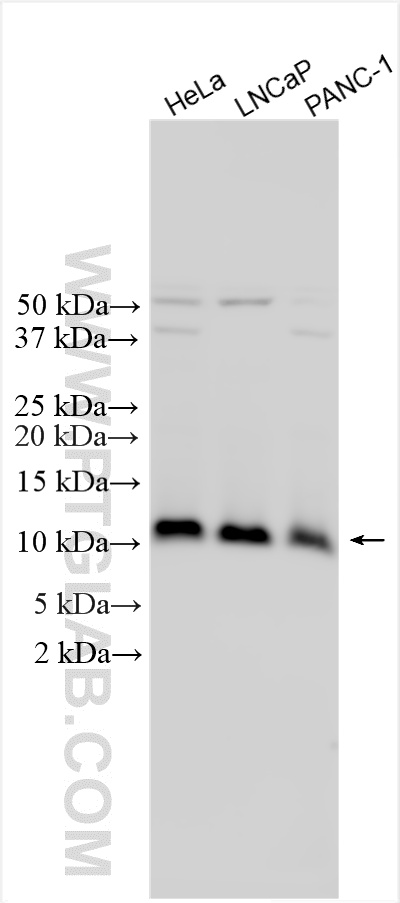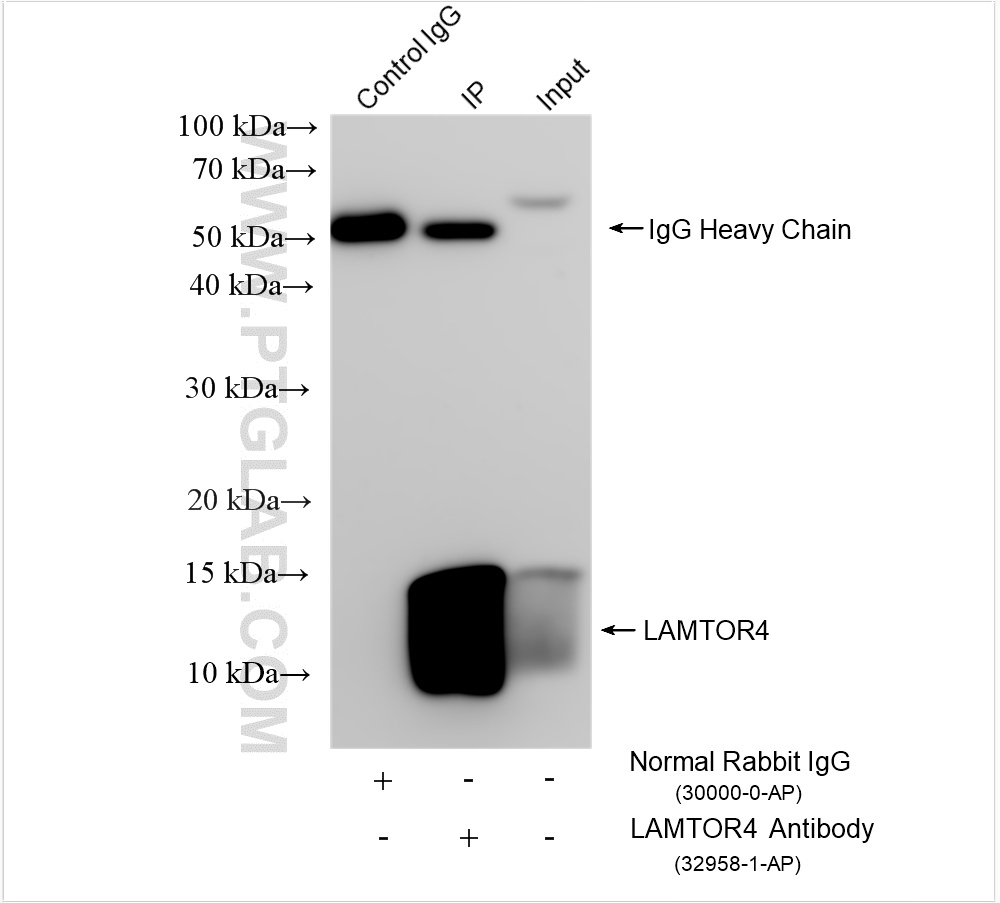验证数据展示
经过测试的应用
| Positive WB detected in | HeLa cells, LNCaP cells, PANC-1 cells |
| Positive IP detected in | HeLa cells |
推荐稀释比
| 应用 | 推荐稀释比 |
|---|---|
| Western Blot (WB) | WB : 1:1000-1:4000 |
| Immunoprecipitation (IP) | IP : 0.5-4.0 ug for 1.0-3.0 mg of total protein lysate |
| It is recommended that this reagent should be titrated in each testing system to obtain optimal results. | |
| Sample-dependent, Check data in validation data gallery. | |
产品信息
32958-1-AP targets LAMTOR4 in WB, IP, ELISA applications and shows reactivity with human samples.
| 经测试应用 | WB, IP, ELISA Application Description |
| 经测试反应性 | human |
| 免疫原 | LAMTOR4 fusion protein Ag39105 种属同源性预测 |
| 宿主/亚型 | Rabbit / IgG |
| 抗体类别 | Polyclonal |
| 产品类型 | Antibody |
| 全称 | chromosome 7 open reading frame 59 |
| 别名 | C7orf59, Late endosomal/lysosomal adaptor and MAPK and MTOR activator 4, Ragulator complex protein LAMTOR4, Ragulator complex protein LAMTOR4, N-terminally processed |
| 计算分子量 | 11 kDa |
| 观测分子量 | 11 kDa |
| GenBank蛋白编号 | BC130553 |
| 基因名称 | C7orf59 |
| Gene ID (NCBI) | 389541 |
| 偶联类型 | Unconjugated |
| 形式 | Liquid |
| 纯化方式 | Antigen affinity Purification |
| UNIPROT ID | Q0VGL1 |
| 储存缓冲液 | PBS with 0.02% sodium azide and 50% glycerol, pH 7.3. |
| 储存条件 | Store at -20°C. Stable for one year after shipment. Aliquoting is unnecessary for -20oC storage. |
背景介绍
Late endosomal/lysosomal adaptor and MAPK and MTOR activator 4 (LAMTOR4) is a protein belonging to the LAMTOR family and believed to be involved in cell cycle, proliferation, and growth (PMID: 29138253). LAMTOR4 has been reported as a regulator complex that acts as an activator of rapamycin complex 1 (mTORC1) by sensing changes in the levels of amino acids (PMID: 33429026). It might offer a strategy to inhibit tumor progression and metastasis in prostate cancer (PMID: 39125671).
实验方案
| Product Specific Protocols | |
|---|---|
| WB protocol for LAMTOR4 antibody 32958-1-AP | Download protocol |
| IP protocol for LAMTOR4 antibody 32958-1-AP | Download protocol |
| Standard Protocols | |
|---|---|
| Click here to view our Standard Protocols |

